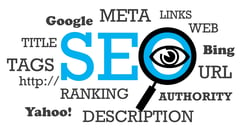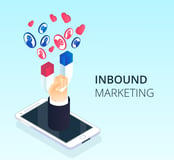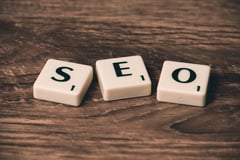Index Content
It is necessary to define the profile that identifies the main features of the customer and thus avoid wasting time and money on a marketing strategy that is not well targeted. Thanks to the Buyer Persona you will define what campaign and what message to send to your customer, and what problems you can help them solve. Your Inbound Marketing strategy should revolve around this type of customer .
what is the buyer persona?
A buyer persona is a semi-fictitious representation of our potential customer, i.e. the one who is most likely to finalise their purchase. It takes into account specific socio-demographic data and information about aspects such as their online behaviour, personal, professionaland relationship with the company offering this product or service.
In the end, it is about putting ourselves even more in the shoes of our target audience to understand what they need from us.
One of the most important characteristics for the buyer persona is the so-called pain. Although the term "pain" may seem inappropriate, in reality we call this any need, motivation or concern that the buyer persona has and that can be solved when purchasing our product or service.
If we know the pain of our potential customer, we know what drives them to make a particular search on Google or predisposes them to buy what our company offers.
Therefore, it is very important to be very clear about who our buyer persona is. To achieve this, we need to gather much more information, for example:
- Personal: hobbies, hobbies, goals, personal and professional objectives, motivations, etc.
- Online behaviour: what social networks they use, if they buy products online and what kind of products, where they look for information, how often they do it, what are their reference pages, what times they are online, etc.
- Work behaviour: responsibilities, challenges, major influences, etc.
- Relationship with our company: what they know about us, why they have hired or bought from us, how they got to know us, what they value most about us as a company, what interaction they have with the brand, etc.
Types of buyer persona
The buyer persona is not always the customer who is in the final decision-making process when it comes to buying our product. This may be reflected in different actions towards our company. In fact, there are three buyer persona profiles:
- Decision maker: this is the person who can make the final purchase decision. This is usually the most common case, especially in B2C.
- Prescriber: the person who recommends the product. A very clear example would be a doctor who can be the prescriber of a certain medicine.
- Influencer: the person whose opinion can positively or negatively influence the purchase decision. It is very important to know who the influencers of our buyer persona are, as this will help us to decide which blogs and profiles on social networks are worth contacting to get some kind of collaboration.
how to develop your ideal buyer persona?
When creating the profiles of our Buyer Persona is not an exact formula, they are ideas to work on and develop them. However, here are some steps to take into account to start creating this potential customer profile:
- what information do I need to collect?
The first step for a good Buyer Persona is to know what you need to collect to define your ideal customer. What are the questions and data you should take into account.
The questions for your Buyer Persona should range from general areas to personal issues. For example:-
-
- demographics: age, gender,
- personal situation: married, separated or single, do you have children?
- employment information: if he/she studies or works, in which company and in which sector does he/she work?
- objectives and goals: it is advisable to differentiate between personal and professional goals.
- challenges and problems: what are the main problems in your day-to-day life? what are the obstacles that separate you from yourself?
- attitudes and behaviours: how does he/she behave on the Internet, from which devices does he/she surf?
- content tastes: what pages do they like, what format do they prefer?
-
-
- It is time to collect the information.
Once you are clear about what your needs are and in which fields you need information, start collecting everything you have about your customers.
Review and consult in depth all the sources where you have information about your customers, such as their social networks. Search on platforms such as Facebook, Twitter and Linkedin, so you can see what they like, who they follow, what they retweet and what they recommend.
In your database you have detailed information about the demographics and personal situation of your customers. This will help you to better define who is really interested in your product. From the information in your database you have important data to start working with.
If you don't have customers yet, you can go to your competitors' websites or blogs to see who is commenting on them. Find out who they are, what blogs they have, and learn about them. - Make the key points from the information you gather concrete
All information is useful, but focus the data in a way that answers the questions you have asked yourself during the phase to profile your Buyer Persona.
Once you have answered all the questions about your customer, the next step is to generate an interaction between your Buyer Persona and your product.
Once a connection is established, point out the possible reticence that separates your customer from your offer, and find the opportunities that can lead you to solve their needs. This is a very important moment in the phase of creating your potential customer .
- Build your Buyer Persona.
With all the concept clear, it's time to move on to practice. Draw your ideal customer with everything you have gathered, in a clear and practical format, understandable for your team and the rest of the company. Create a panel of your persona and describe it as if it were a story. Give it a generic name and, if possible, add a picture to describe it better.
- Share and nurture the relationship with the customer.
The Buyer Persona is a reference for the whole company. When you finish defining it, share it with the rest of the organisation and teams. Listen to any suggestions that the rest of the company can make, especially if these people are in constant contact with your customer, such as the Sales team.
And above all, the most important thing: do not stop improving your Buyer Persona. Follow the evolution of your product and your customers. What works for you today may not work for you tomorrow, so a good job is useless if you are not constantly updated.
Here we leave you the link so you know what mistakes are often made when designing the buyer persona, so you can identify them in your strategy and improve them.
Knowing our users based on what motivates them gives us a much clearer idea of what content they consume and what they really need from us. In this way you will get even closer to that person who is willing to buy your product.





